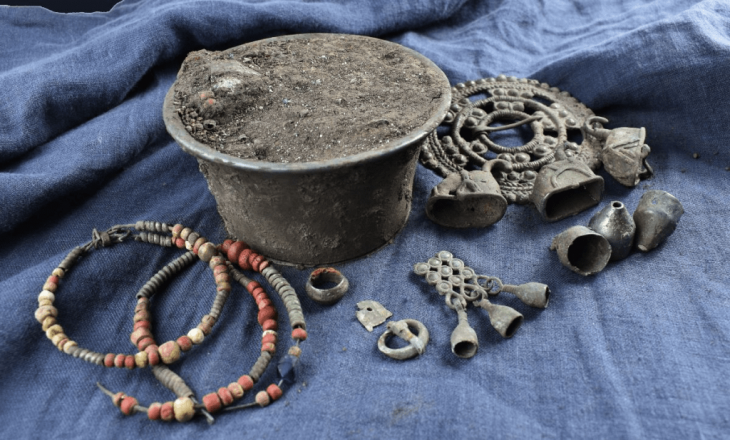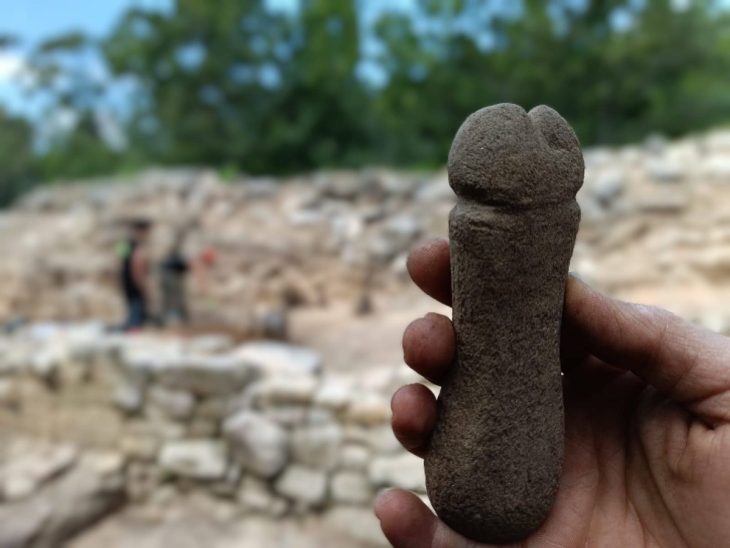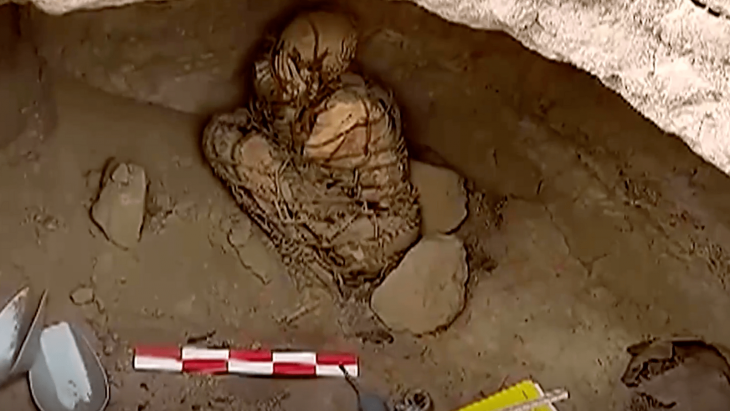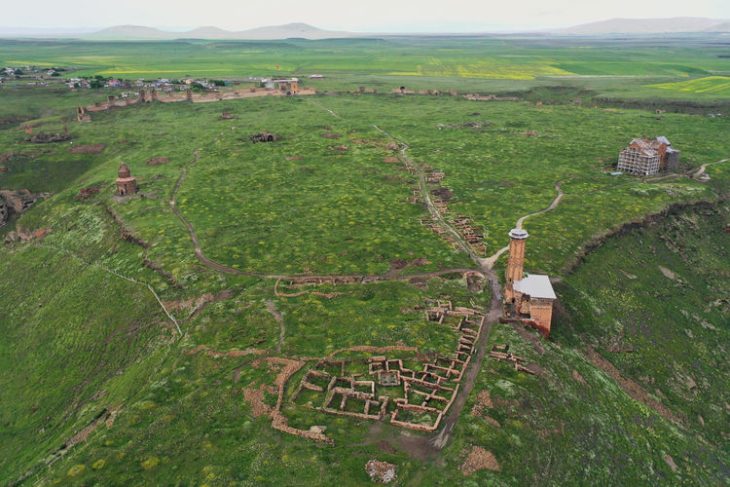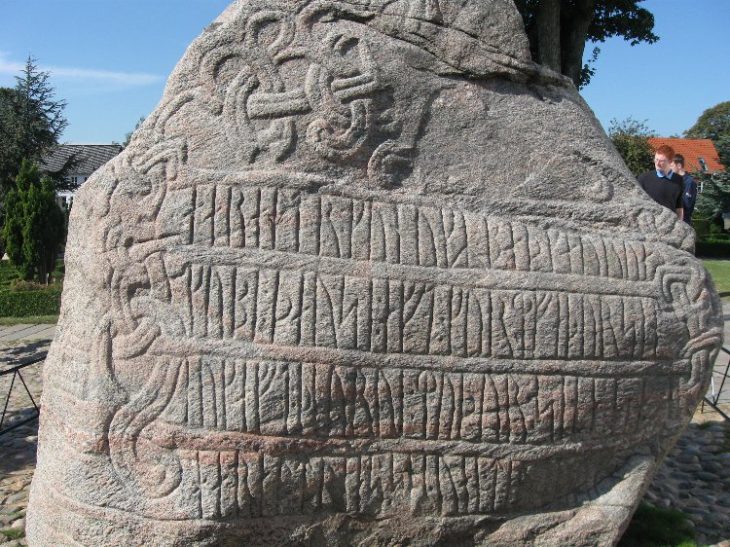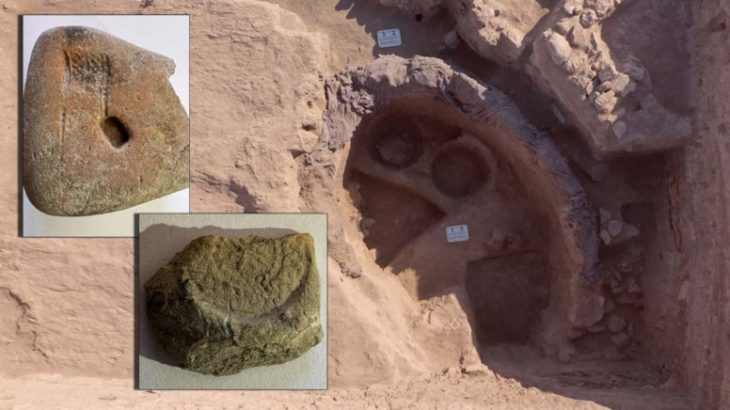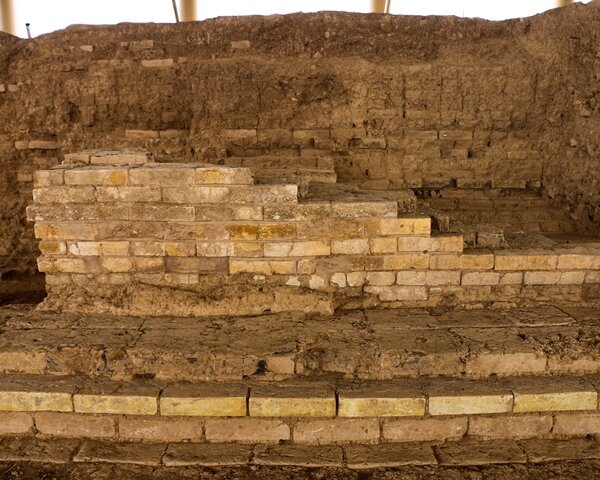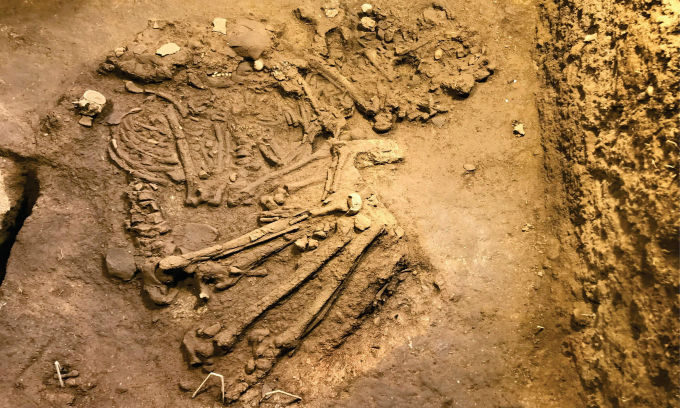A rare archaeological object – thought to be the only one of its type in the former Roman Empire – has been discovered in Carlisle, England. The remnants of the Roman bathhouse at the Carlisle Cricket Club have revealed an extremely rare chunk of Tyrian purple dye, the first of its kind ever discovered in northern Europe and possibly the entire Roman Empire.
The Luguvalium Roman settlement dates back to the 3rd century during the reign of Emperor Septimius Severus. The discovery was made in the drainage section of a monumental structure believed to be a Roman bathhouse.
Known as “imperial purple,” tyrian purple was an extremely valuable dye in ancient Rome because of its rich, vivid color, which denoted imperial authority, wealth, and status. It took a lot of resources and labor-intensive procedures to produce even small amounts, as it was made from thousands of crushed sea snails (Bolinus brandaris) from the Mediterranean. This rarity and exclusivity meant that it was more valuable than gold, sometimes up to three times as much by weight.
Following its discovery, the pigment was further investigated by specialists at the University of Newcastle and analyzed with assistance from the British Geological Society. The analysis showed that the pigment had high bromine and beeswax content, almost certainly proving that it was Tyrian purple.
The discovery is noteworthy because Tyrian purple is rarely found in its solid state; the paint used in murals or on high-status coffins, such as those discovered in Pompeii and Roman Egypt, is the most common form of Tyrian purple discovery.
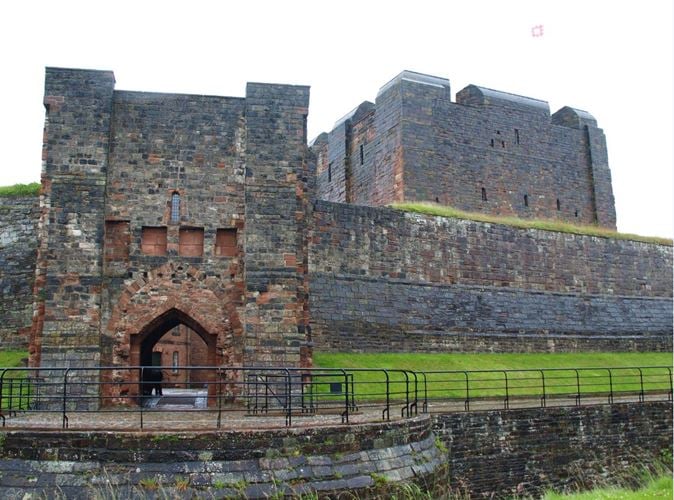
It was most famously produced around the city of Tyre in the Eastern Mediterranean which gives it its name. Tyre is in modern-day Lebanon. It was also produced in North Africa, and off the coast of Morocco too.
Tyrian Purple clad kings and emperors from the Bronze Age to the Persians, to Alexander the Great, to Cleopatra VII, to the Romans, and then Charlemagne and the Byzantines. Sometimes the dye was used on clothes, but it was also used to paint walls in grand public buildings, and the homes and properties of the elite (including walls of bathhouses).
Frank Giecco, Technical Director at Wardell Armstrong, remarked on the importance of this find, stating, During millennia, Tyrian purple was the most expensive and coveted color in the world. Its presence in Carlisle, combined with other evidence from the excavation, reinforces the hypothesis that the building was associated with the Imperial Court of Emperor Septimius Severus, who was in York, and possibly related to an imperial visit to Carlisle.
“Other evidence being an inscription stone to the Empress Julia Domna, the date of the monumental building – among the largest on Hadrian’s Wall – coinciding with Emperor Septimius Severus campaigns in Scotland, and an ancient source stating Septimius Severus was in Carlisle, and the high quality of the objects discovered at the bathhouse, granting of civic status to the local Celtic tribal capital at Carlisle; which in effect is the beginning of the city of Carlisle.
The discovery of Tyrian purple in Carlisle is an unusual occurrence, particularly in northern Europe. Its implications extend beyond the pigment itself, implying that the Roman bathhouse may have been linked to imperial power or visited by high-ranking officials. This link to the Roman court raises new questions about the site’s significance and role in the larger Roman Empire.
Cover photo: Tyrian purple fragment found at Carlisle, England. Wardell Armstrong


